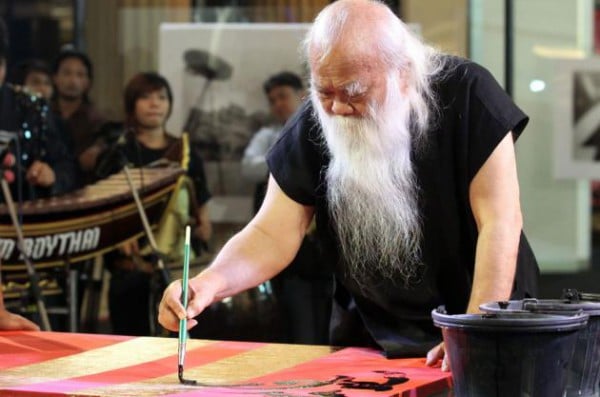People
Thawan Duchanee, Thai Art Legend, 1939–2014


Alexander Forbes

Thailand’s most famous artist, Thawan Duchanee, died on Wednesday, September 3rd at the age of 74. As the Bangkok Post reported, Thawan came to prominence in the 1970s when a series of his paintings, which presented a non-traditional take on representations of Buddhism, caused an uproar in Thailand. The controversy culminated in an incident in which a group of vandals entered a gallery showcasing the paintings and scratched their surfaces.
His largest project internationally was a 1977 commission to paint a large portion of Germany’s Gottorf castle, located near the Baltic Sea. He reportedly took three years to complete the few hundred rooms.
Thawan was born in Thailand’s northern Chang Rai provence. He first took up studies at Bangkok’s Pohchang Academy of Arts before moving on to Silpakorn University’s Faculty of Fine Arts to study under Italian sculptor Silpa Bhirasri who spend much of his life in Thailand and revolutionized the country’s artistic landscape. Duchanee spent approximately a decade in Europe to earn his Ph.D. at the Rijksakademie. He returned to Thailand in the early 70s.
Art historian and Thai Culture Ministry secretary, Apinan Poshyananda told the Bangkok Post: “He was a true avant-garde—not because he did abstract art, but because of his individualism. He defied category because his greatest skill is to assimilate and hybridise various elements, identities, and forms.”
According to Poshyananda, Thawan deftly threw together traditions from Burmese and Tibetan art with local Thai traditions, particularly Lanna art. “It was anti-mainstream and later what he did was so popular that it became a new mainstream,” he added.